Lichtungen und Himmel
Es ist Winter. Robert Zahornicky geht in den Wald, bleibt stehen und blickt in den Himmel. Er sieht nichts als Äste, die ihre Blätter verloren haben. Manche Baumspitzen bewegen sich ganz sachte, wenn der Wind über sie streicht.
Der Vorgang wird fotografisch wiederholt: Robert Zahornicky geht in den winterlichen Wald, stellt ein Stativ auf und richtet die Panoramakamera senkrecht nach oben. Mit dem Druck auf den Auslöser bewegt sich das Objektiv, bis es einen Winkel von 140° erfasst hat. Dabei entsteht auf dem Film ein Bild in den Maßen 24 x 60 mm.
Die Ansichten, die sich niederschlagen, entsprechen nicht den Blicken, die der Fotograf auf seine Umgebung geworfen hat. Das kalte Auge der Apparatur verfügt über einen anderen Gesichtskreis und eine andere Auffassung als die Sehorgane des Menschen. So wird an den Rändern des Ausschnitts noch jede Kleinigkeit genau registriert, während unsere Sicht immer stärkere Unschärfen aufweist, je mehr wir einen Punkt fixieren. Vor allem aber täuscht die Fotografie über die Natur und den Eindruck der Dinge, die lediglich als Silhouetten wahrgenommen werden. Die sich zur Mitte der Aufnahme rankenden Baumwipfel mögen dem Betrachter wie eine Kuppel erscheinen, die sich schützend über ihn wölbt. Doch im Blick auf das Zentrum eines Bildes entfaltet sich zugleich eine Sogwirkung in anderer Richtung, die uns gewissermaßen in den Himmel fallen lässt.
Timm Starl
Glades and Sky
Robert Zahornicky walks into a forest in winter, sets up a tripod, and turns his panoramic camera to face straight up.
Once the triggers ist action, the lens pans until it has scanned an angle of 140 degree. On the film, this process produces an image measuring 24 by 60 mm.
The views the photographer captures are unlike what he saw when he lookes around himself. The cold eye oft he apparatus commands a different scope of view and perceives things on a different way than man’s visual organs. For instance, it registers the smallest detail even along the edges oft he selection; our vision, by contrast, gets blurrier the more intently we focus on a single spot. More importantly, photography deceives us concerning the nature of things and the impression they create, letting us discern them only os silhouettes. The treetops leaning toward the center oft he picture may look tot he beholder like a sheltering cupola rising above him. Yet as we gaze at the center of one of these images, we also feel a strong pull in another direction, making us fall, as it were, into the sky.
Timm Starl / Translated by Peter Lillie
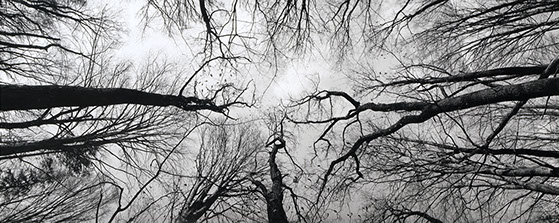
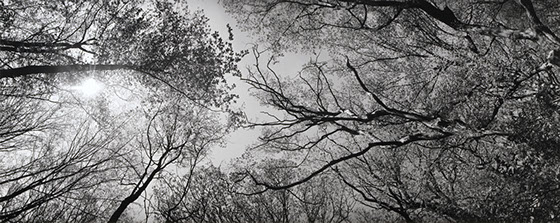
Kniewald 22, Gelatin silver print, 28 x 70 cm · 2010
Jubiläumswarte 35, Gelatin silver print, 28 x 70 cm · 2010
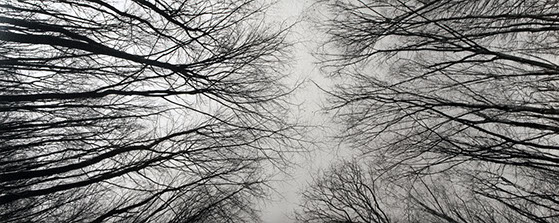

Frauenwart 2, Gelatin silver print, 40 x 100 cm · 2012
Tulbinger Kogl, Gelatin silver print, 40 x 100 cm · 2011
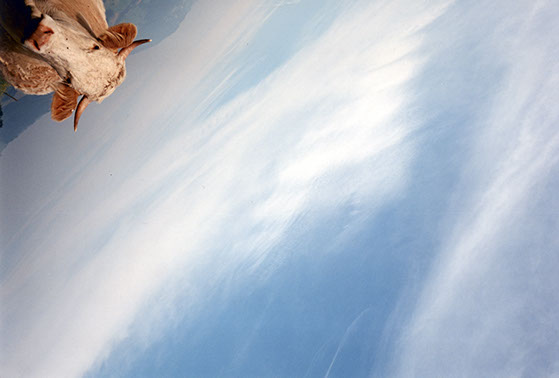

Der Himmel über, Gallbrunn, C-Print, 20 x 30 cm · 1990
Der Himmel über, Linz, C-Print, 20 x 30 cm · 1990

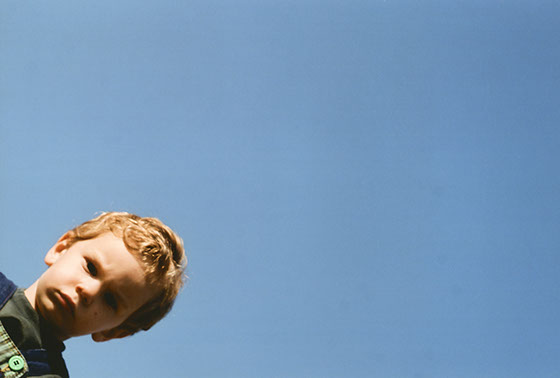
Der Himmel über, Seitenstetten, C-Print, 20 x 30 cm · 1990
Der Himmel über, Tristan, Pressbaum, C-Print, 20 x 30 cm, · 1990
Himmel
Inspiration zu den querformatigen Fotos der Serie “Himmel“, in der Zahornicky kurze Augenblicke unterschiedlicher Wolkenformationen vor dem Hintergrund eines blauen Himmels symbolhaft festhält, war ein Gedicht der österreichischen Schriftstellerin Elfriede Gerstl, in dem sie den Himmel als romantischen Sehnsuchtsort beschreibt.
Hartwig Knack
Sky
The inspiration for the panoramic images in the series Skies, in which Zahornicky symbolically captures brief moments of various cloud formations against a blue-sky backdrop, was a poem by the Austrian writer Elfriede Gerstl, in which she described the sky as a place of romantic yearning.
Hartwig Knack/ Translated by Peter Lillie


Himmel, 9.8.2012, 18:00 Uhr, Gelatin silver print, 40 x 100 cm · 2012
Himmel, 7.8.2012, 15:50 Uhr, Gelatin silver print, 40 x 100 cm · 2012
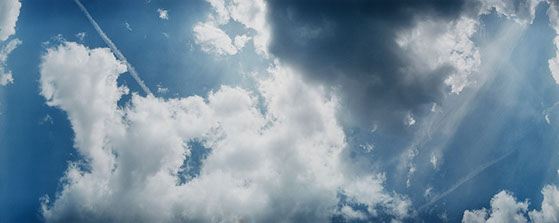
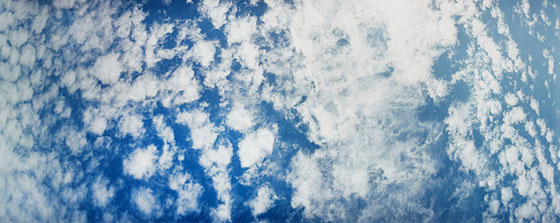
Himmel, 5.6.2014, 12:30 Uhr, Gelatin silver print, 40 x 100 cm · 2014
Himmel, 14.6.2013, 12:30 Uhr, Gelatin silver print, 40 x 100 cm · 2013